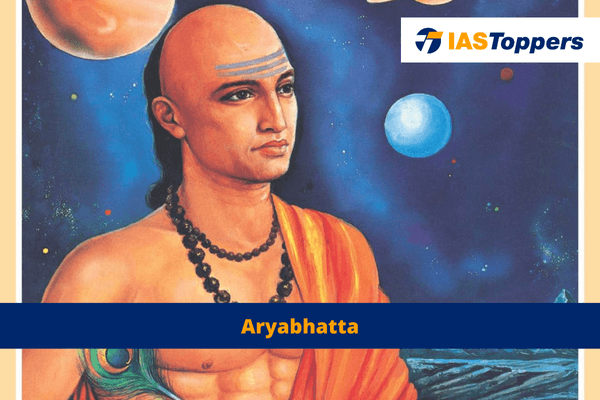Aryabhatta was a renowned mathematician, astronomer, astrologer, and physicist. He made significant contributions in his field during the fifth century. His notable work Aryabhattiya was written at the age of 23 and it served as a comprehensive summary of the mathematics of his time, divided into four sections. While the first two sections focused on mathematics, the remaining two sections delved into the captivating realm of astronomy.
Aryabhatta will be helpful for UPSC IAS Exam preparation. GS Paper-1 History.
Table of Content
- Birthplace and Education of Aryabhatta
- Contribution of Aryabhatta to Mathematics
- Contribution of Aryabhatta to Astronomy
- Legacy of Aryabhatta
- Honours
- Conclusion
- Frequently Asked Questions (FAQs)
Birthplace and Education of Aryabhatta
- Aryabhatta was a renowned figure in ancient times.
- He excelled in multiple disciplines such as mathematics, astronomy, astrology, and physics during the fifth century.
- At the age of 23, he wrote Aryabhattiya.
- Aryabhattiya is a concise compilation of the mathematical knowledge of his era.
- Nalanda is home to the famed astronomical observatory called Khagolshastra.
- Khagolshastra served as Aryabhatta’s educational institution.
- Aryabhata mentions that during the Kali Yuga, he was 23 years old, which aligns with the year 499 CE and suggests his birth year as 476 CE.
- Aryabhata identified himself as a resident of Kusumapura or Pataliputra (present-day Patna in Bihar).
- Aryabhatta died in 550 CE in Patliputra only.

Contribution of Aryabhatta to Mathematics
He played a significant role in advancing the field of mathematics. This earned him the title of “father of Indian Mathematics.” Some of the important discoveries of Aryabhatta in the field of Mathematics are:
- Place value system and zero
- Approximation of π
- Trigonometry
- Indeterminate equations
- Algebra
Contribution of Aryabhatta to Astronomy
- Aryabhata devised a unique astronomical system known as the audAyaka system, where the counting of days originates from Uday, the break of dawn at the equator or “Lanka.”
- Although certain later works of Aryabhata on astronomy, potentially present an alternative model called Ardha-ratrikaor midnight.
- They have been lost.
- Their essence can be partially reconstructed through the insights shared in Brahmagupta’s Khandakhadyaka.
- In some written accounts, Aryabhata appears to attribute the apparent movements of celestial bodies to the Earth’s rotation.
- It is possible that he entertained the idea of planetary orbits being elliptical rather than perfectly circular.
- His notable work in the field of Astronomy includes:
- Motions of the Solar System
- Eclipses
- Sidereal periods
- Heliocentrism
Legacy of Aryabhatta
- Aryabhatta’s contributions continue to find practical applications in modern times.
- The Islamic world relies on Aryabhata’s astronomical calculations to determine dates for their calendars.
- Trigonometric tables derived from Aryabhatta’s findings play a crucial role in computing various Arabic astronomy tables.
- Aryabhatta’s precise definitions of cosine, sine, versine, and inversesine greatly influenced the development of trigonometry mathematics.
- Notably, he pioneered the creation of sine and versine (1 cos x) tables spanning from 0° to 90° in intervals of 3.75°, with a remarkable precision of four decimal places.
- It is worth noting that the terms commonly used today such as ‘sine’ and ‘cosine’ are actually mistranslations of Aryabhata’s original phrases jya and koji.
Honours
- The government of Bihar founded Aryabhatta Knowledge University (AKU) in Patna in recognition of Aryabhatta’s contributions.
- To commemorate his legacy, India named its first satellite Aryabhata, and a lunar crater was also named after him.
Conclusion
Aryabhatta made extraordinary and significant contributions to mathematics and astronomy. The Aryabhatta’s discoveries and innovations proved useful in the fields of science and mathematics. Trigonometry, pi, the place value system, and other innovations made by Aryabhatta help to solve complex problems and are still used and taught in schools and colleges today. His contributions to astronomy significantly altered the scientific community, paving the way for researchers and astronauts to make significant strides in the field.
| Other Articles in History & Culture | |
| Pandya Dynasty | Modern Indian Painting |
| Religion & Culture during Gupta Period | Social Development during Gupta Period |
| Kakatiya Dynasty | Carnatic Music |
FAQs (Frequently Asked Questions)
Who was Aryabhatta?
Aryabhatta was a renowned mathematician, astronomer, astrologer, and physicist, of the fifth century.
Where was Aryabhata born and died?
Aryabhata was born and died at the Kusumapura (Pataliputra) (present-day Patna, India).
Who discovered zero Aryabhatta?
The decimal system’s use of zero and the introduction of zero in mathematics are both credited to Aryabhatta. Indian astronomer and mathematician Brahmagupta used zero in addition and subtraction calculations. Zero was first used in calculations by Aryabhatta in the fifth century and Brahmagupta sometime around 628 BC. The concept of zero was thus invented by Aryabhatta.
What is the contribution of Aryabhatta to mathematics?
Aryabhatta’s contributions to mathematics are trigonometric equations, the value of pi, equations on mathematical progression, and quadratic equations.


